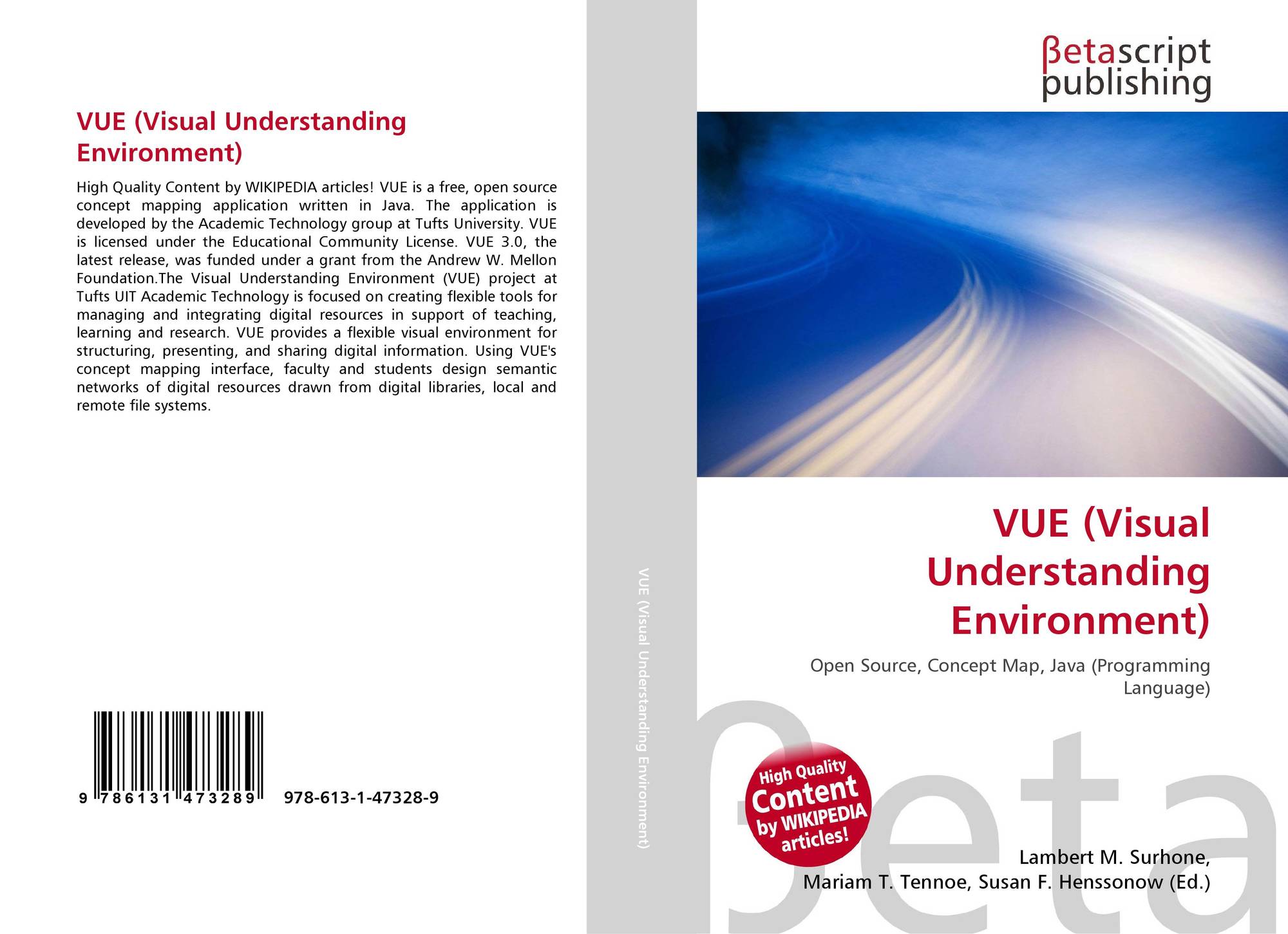A concept map is a way of visualizing and graphically representing relationships between ideas, images, and words. It is an umbrella term that encompasses many diagramming approaches also known as knowledge maps, systems maps, or mind maps. In general, a concept map diagram includes 'nodes' that are the concept (idea, image, word) and 'links' that define the relationship connecting the nodes. Typically the relationship can be categorized as cause/effect or part/whole, but often concept map links include linking phrases that specifically define the relationship.
The Visual Understanding Environment (VUE) is a free, open-source concept mapping application written in Java. The application is developed by the Academic Technology group at Tufts University. VUE is licensed under the Educational Community License. VUE 3.0, the latest release, was funded under a grant from the Andrew W. Mellon Foundation. The research outcomes on visual learning make complete sense when you consider that our brain is mainly an image processor (much of our sensory cortex is devoted to vision), not a word processor. The Visual Understanding Environment (VUE) is an Open Source project based at Tufts University. The VUE project is focused on creating flexible tools for managing and integrating digital resources in support of teaching, learning and research. VUE provides a flexible visual environment for structuring, presenting, and sharing digital information.
The Visual Understanding Environment (VUE) project at Tufts' Academic Technology department aims at providing faculty and students with tools to successfully integrate digital resources into their teaching and learning. VUE not only provides a visual environment for structuring, presenting, and sharing digital information but also viewing. Visual Understanding Environment. Visual Understanding Environment (VUE) is a powerful mind-mapping, teaching, and presentation tool. Note: See 'Changes' section for details about the rpavlik fork. Continuous ('snapshot') builds are available by clicking the 'actions' tab, choosing the latest build, and picking one of the 'Artifacts' Code.
In the classroom, instructors may use concept maps to help their students develop logical thinking and systems analysis skills. Since it is a great way to see how individual ideas form a larger whole, students may find it an effective means of learning by analyzing connections among course concepts in the material.


There are many free online concept-mapping tools, each with its own feature set supporting different kinds of concept mapping activity. One, Visual Understanding Environment (VUE) from Tufts University, was selected for use in Columbia University professor Peter Eisenberger's 'The Earth/Human System' course for advanced undergraduates.
This interdisciplinary course focuses on the basic scientific issues and problems of sustainability in our Earth/Human system. In case study format, students created 'systems maps' to learn how to analyze and understand the complex problems of sustainability by studying concepts related to their own specialty (in biology, physics or the social sciences) and other fields by working with students from different backgrounds of study. (Below is a small segment of a larger map that explores the relationships among energy issues).
Professor Eisenberger aimed to illuminate the relationship and networks of course concepts and knowledge so that students from a wide range of fields might be more prepared to address sustainability problems from a truly interdisciplinary point of view. A concept mapping exercise was assigned to guide students through the broad ranging complexity of problems in the Earth/Human system. Students were able to envision the relationship dynamics in multiple ways, thus reinforcing the course pedagogy.
Through a series of meetings with the professor and teaching assistant, it was determined that the concept mapping tool should be free, allow file export for sharing, and be easy to use to ensure that students with no prior experience with concept maps could freely brainstorm at first try. As mentioned earlier, several other tools were tested (including Compendium, Gliffy and Visio), but VUE had all the necessary features necessary to support Professor Eisenberger's class assignment.
VUE is a free, Open Source, desktop application that is easy to install. Its interface is sophisticated yet very easy to use. Notable features include the ability to customize the nodes and links with color, arrowhead styles, and line weights. Grouping and sub-grouping of map areas is possible.
Using VUE as a concept-mapping tool is just one feature of this rich application that '...is focused on creating flexible tools for managing and integrating digital resources in support of teaching, learning and research. VUE provides a flexible visual environment for structuring, presenting, and sharing digital information.'
Visual Understanding Environment Tutorial
In interviews with the professor and teaching assistant, it appears that VUE did meet the needs of the course assignments. However, now that they are more familiar with the ease of use of this tool, new opportunities are presented to enhance the concept mapping assignment in such a way so that students can show the evolution of their maps using the more advanced features of VUE which include embedding images and applying metadata keywords for searching more content rich maps.
Vue
More information:
http://vue.tufts.edu/index.cfm
http://en.wikipedia.org/wiki/Concept_map
Visual Understanding Environment
VUE is a flexible software program designed to enable faculty and students to integrate electronic content into their teaching and learning. Developed at Tufts, the Visual Understanding Environment (VUE) is a tool for managing data with a focus on using digital repositories. Using VUE, the process of selecting and organizing data transforms information into meaningful knowledge.
Visual Understanding Environment
Please use the side navigation to explore topics covered in this user guide.




